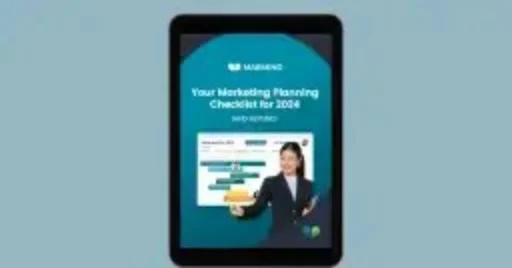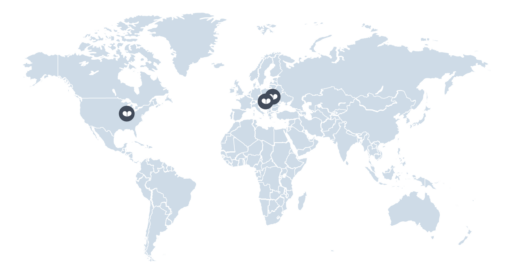Among varied marketing strategies, CRO marketing stands out as a unique and impactful approach. It focuses not only on attracting web visitors but on transforming them into loyal customers.
And that’s what every company ultimately wants to achieve with their marketing efforts.
What is CRO marketing, and – more importantly, how to tackle it in 2024?
Read our article to find out.
What is CRO marketing?
Conversion Rate Optimization marketing is a process of increasing the percentage of visitors to a website who take a desired action. A desired action could be anything from making a purchase to signing up for a newsletter. A key component of CRO is understanding how users navigate through your site, what actions they take, and what holds them back from completing the action.
CRO involves a variety of techniques, such as A/B testing, user feedback, and analytics review. The goal is to make your website more effective at converting current visitors into customers – effortlessly maximizing return on marketing investments while improving user experience.
Benefits of CRO digital marketing
The main role of CRO marketing is to turn site visits into valuable actions. CRO can provide valuable insights into user behavior to create targeted campaigns and boost sales. It can also save you time or money (or both in the long run).
Discover how CRO marketing can revolutionize your digital marketing strategy.

Increased conversion rates
CRO focuses on boosting the actions your visitors take, like making a purchase or signing up for a mailing list. You get more from your existing traffic and turn casual browsers into loyal customers.
Elevated User Experience (UX)
Through conducting tests like A/B or Multivariate Testing, CRO pinpoints what resonates with your audience, whether it’s a more readable font or a less intrusive CTA. Enhanced user experience is a cornerstone in CRO, as it not only increases engagement but also drives website’s traffic or conversions.
Higher ROI from existing traffic
Instead of chasing new traffic, CRO helps you to focus on getting the most out of the visitors already on your site. It’s a smarter, cost-effective way to enhance your marketing without the extra spend.
Deeper customer insights
CRO allows you to gather data on your customers and rank these segments based on their behavior and preferences. It is a goldmine for understanding your audience. By analyzing behavior and preferences, you can craft strategies that hit the mark, aligning perfectly with your business goals.
Better scalability for business growth
By learning how to use CRO effectively, you can ensure that your business grows without necessarily increasing the traffic to your site. This scalability is key in online marketing, as it allows you to focus on your current audience, serving them better and converting more efficiently.
How to tackle CRO marketing?
Getting started with CRO marketing is crucial to grow your business. Use CRO marketing tips from this list to make your company goals a reality, not just an optimistic concept.
1. Align CRO vs SEO for synergistic growth
Think of CRO and search engine optimization (SEO) as a dynamic duo.
SEO gets people to your site through organic search, like a magnet attracting iron filings. Then, CRO steps in – turning these visitors into customers, much like a friendly salesperson who persuades browsers to buy.
- Audit your site for CRO and SEO: Start by conducting a thorough audit of your website. Use tools like Google Analytics and SEMrush to analyze your current SEO performance. Look for keywords that bring traffic but have a low conversion rate.
- Integrate keywords with conversion goals: Once you identify your top-performing keywords, integrate them into your pages that are designed for conversion, such as landing pages or product pages. Ensure these pages are optimized for both search engines and user experience.
- Monitor and adjust: Regularly review your SEO rankings and conversion rates. If you notice pages that have high ranking rates with low conversions, investigate and tweak the page layout, content, or call-to-action (CTA) to better align with user intent.
2. Optimize key elements on your site
Here’s a gentle reminder of the need to determine on-page improvements.
A clear, catchy heading can grab attention, while the right keywords ensure you’re speaking the visitor’s language. And the CTA button? It’s like the big, shiny ‘Play Now’ button – hard to resist clicking, likely to convert.
- Craft compelling headings: Make headings catchy and relevant. Use direct language that addresses your audience’s needs. Tools like CoSchedule’s Headline Analyzer can help evaluate their effectiveness.
- Strategically place keywords: Incorporate keywords naturally into your content, titles, and meta descriptions. Use tools like Google Keyword Planner for research. Ensure they blend seamlessly into your content.
- Design Irresistible CTA Buttons: Make your CTAs stand out with contrasting colors and action-oriented text. Place them strategically to catch the eye, like at the end of engaging content or near exciting offers.
Also, take care of page readability. Use short paragraphs, sub-segments, bullet points, and subheadings for easier reading. Break down complex information into simple, digestible pieces.
Draw the reader’s attention at first glance, as Great Jones does.

3. Implement A/B and Multivariate Testing (MVT)
Imagine you’re a chef trying out different versions of one recipe to see which one customers like more. That’s A/B testing. You tweak one variable or element – say, change the color of your CTA button – and see if it affects visitor behavior. There’s no failed test – each one can give you valuable insight based on real behavior.
MVT is like adjusting multiple ingredients at once. Experiment with multiple variables for different versions of your web pages. For example, try altering the layout, messaging, or images to see which combinations drive more conversions. Maybe a small change both in the button color and the headline will bring a surprising new look to your page, enticing more visitors to subscribe.
Tip: Tools like Optimizely or Google Optimize can help you run these tests. They’ll split your traffic between the two different versions of the page and track which performs better.
4. Focus on Conversion Rate Optimization (CRO) marketing strategy
This is about smoothing the conversion process and path from ‘Hello’ to ‘Thank you for your purchase.’ It’s like setting up a series of well-placed signs leading from the entrance of a store right up to the checkout.
Every step of the visitor’s journey on your site needs to be clear and compelling. Whether it’s subscribing to a newsletter or buying a product, you’re gently guiding them toward that goal, making the journey as enjoyable and straightforward as possible.
- Map the customer journey: Outline the steps a visitor takes from landing on your site to completing a conversion. Identify any barriers or points of friction.
- Optimize each step: Ensure each step in the journey is optimized for conversion. This could mean simplifying forms, adding testimonials for credibility, or ensuring a seamless checkout process.
- Continuously test and refine: CRO is an ongoing process. Continuously test different elements and refine your strategy based on the results and evolving user behavior.
5. Boost lead generation efficiency
Use CRO to improve the efficiency of your marketing efforts in lead generation.
Identify which pages have high traffic but low conversion rates and make changes to optimize these pages for better performance. Is your high-traffic blog post lacking a clear call to action? Maybe your product page is too cluttered?
Once you spot these underperformers, it’s time for a makeover.
- Simplify forms to just a few fields.
- Add testimonials for credibility.
- Tweak your CTAs to be more persuasive.
- Optimize page load speed to perform faster.
- Implement chatbots for instant engagement.
Start with small changes. For example, changing a CTA from “Learn More” to “Get Your Free Trial” can make a world of difference. Keep an eye on the performance after these tweaks – it’s like watching a plant grow after you’ve just watered it.
6. Set and monitor Key Performance Indicators (KPIs)
Having original goals and KPIs is half the battle when it comes to the conversion rate optimization process.
You need to start by defining what success looks like for you. Is it more sign-ups, increased sales, or more downloads? Use tools like Google Analytics to track these goals.
Imagine you run an e-commerce site – your KPIs might be the conversion rate of visitors to buyers or the average order value. Regularly check these metrics to ensure you’re on the right path. If you notice a dip in performance, it’s a signal to pivot or tweak your strategy.
It’s a continuous cycle of optimizing your website, setting goals, monitoring KPIs, and adjusting your strategy.
How to effectively measure your CRO? Here’s a concise list of KPI examples you might consider:
- Conversion Rate: The percentage of visitors who take a desired action (purchase, sign-up, download).
- Average Order Value (AOV): The average amount spent each time a customer places an order on your site.
- Bounce Rate: The percentage of visitors who navigate away from your site after viewing only one page.
- Pageviews per Visit: Indicates how many pages a typical visitor views before leaving.
- Lead Generation Costs: The cost associated with generating a new lead through your website.
- Customer Lifetime Value (CLV): The total revenue you can expect from a single customer over the course of their relationship with your business.
- Cart Abandonment Rate: The percentage of shopping carts that are filled but never make it through to the transaction.
7. Analyze and adapt your marketing plan
Staying adaptable and data-driven is a must-have when you create a marketing plan.
Accept that your marketing plan will vary and needs to evolve. For example, if you notice that half of your traffic is bouncing from your homepage, it’s time to reassess and adapt your approach.
But how can you analyze and adapt in a smart way?
MARMIND is a comprehensive marketing resource management tool that can help you streamline all marketing processes.

It offers a centralized cockpit for planning, budgeting, and tracking campaigns – and makes it easier to analyze performance and adapt strategies accordingly.
Be ready to integrate plans, budgets, and results all in one single place. Keep your marketing plan fresh, ensuring it aligns with your audience’s changing preferences.
Find out how to plan marketing effectively with The 5 Elements of Effective Marketing Planning.
8. Emphasize customer experience
Think of your website as a host at a party. You want your guests (visitors) to have a great time, stay long, and come back for more.
Ensure your site is easy to navigate – no one likes getting lost in a confusing layout. Make your content engaging and informative – it should speak to your visitors, answer their questions, and pique their interest.
For example, if you’re selling a product, how about a video demo or a fun quiz to help them decide? Look at Andie. It’s a swimwear e-commerce site that provides a quiz with 12 questions that help customers find the perfect swimsuit match.

Regularly ask for feedback through surveys or feedback forms and use this for optimizing your conversion and making your site even more welcoming and helpful. A happy visitor not only converts but also potentially becomes a brand ambassador.
Key Takeaways
- Conversion Rate Optimization (CRO) marketing involves a strategic approach to transform website visitors into loyal customers. It’s about making sure that every visitor contemplating a purchase is optimally engaged.
- The benefits of CRO are manifold. By encouraging visitors to subscribe or take other desired actions, CRO enhances the user experience and increases conversion rates. This focus shifts from solely trying to focus on generating more traffic to getting the most out of the existing traffic, i.e., converting half of the traffic into active customers.
- Implementing CRO effectively involves understanding your audience’s persona and continuously testing website elements. This includes crafting compelling headings, strategically placing keywords, and designing clear CTAs. Regular A/B and Multivariate Testing are essential in refining these elements, ensuring they cater to the needs of those considering a purchase and contribute to overall marketing efficiency.
Conclusion
To wrap it all up, conversion rate optimization is about getting more out of your website traffic– turning visitors into loyal customers and fans. Remember, it’s as much about the quality of your visitors as the quantity.
And if you’re looking to get your marketing and CRO strategies working together smoothly, give MARMIND a try. It could be the tool you need to bring it all together. Check it out and see for yourself!










